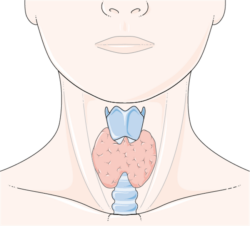Every time I read about an environmental endocrine disrupting chemical, a medication or even sometimes actual endocrine research, I am amazed, dumbfounded by the lack of up-to-date information about how hormones and receptors work. Indeed, much of the research still operates on what is called the ‘classical’ view of hormone-receptor activity. And while, those functions are still accurate, there is so much more going on that merits understanding and investigation. Here are some basics that will blow your mind.
Understanding Hormones and Receptors
Hormones are gods. Like the gods of Greek mythology, hormones control everything. There is a not a physiological system that a hormone does not impact in some manner or another. And this is why ignoring hormones in health research is so bloody dangerous and just downright stupid.
Hormones bind to receptors. This isn’t mind-blowing, but is the basis for all endocrine and in fact chemical activity in the body – compound A has to talk to body part B. The conversation is mediated through receptor binding. The shape of the hormone determines which receptors and how strongly the hormone fits or binds. Much like a lock and key, only certain keys open certain locks.
Hormones are promiscuous. Hormones sleep around. Hormones like binding with other hormone receptors and are often similar enough in structure to do so, especially at higher concentrations. This means that estrogens will bind with estrogen receptors but also androgen receptors. Progesterone binds with estrogen receptors but also gluccocorticoid (cortisol) and mineralocorticoid receptors, and so on. Because of this cross-binding, the measure of interest becomes the hormone’s ‘affinity’ for a certain receptor. How much does hormone A like receptor B. The stronger the affinity, the longer it stays bound and the more intracellular effects it exerts.
The most shapely hormones bind more. Like mating, shape matters. The more shapely hormones bind to more receptors, more tightly. For example, the shape of MBP, the metabolite of BPA fits into the estrogen receptor better than BPA. In fact, MBP is a 1000 times stronger than BPA in its affinity for the estrogen receptors (ERs). If both MBP and BPA were competing for the affections an ER, MBP would win. This happens with all hormones and hormone-like chemicals, the more shapely the compound, the better it fits with a receptor and the longer it stays there.
Promiscuous hormones spread the love. The effects of an endocrine disruptor, even an estrogenic one may not be limited to the reproductive classics. Estrogen receptors are located all over the body and the brain, so too are androgen, progesterone, glucocorticoid, mineralocorticoid and thyroid receptors. So any time we talk about a hormone’s impact on health, we have to look at where its receptors are located. Ditto for chemical that binds to hormone receptors. And to make it even more complicated, because these hormones bind promiscuously, one also has to consider the fact that the hormone may act at other, non-similar receptors. Hormone promiscuity makes endocrine research infinitely more complex than asking whether hormone A binds to hormone receptor A or how long a substance takes to clear from the body.
Hormones beget more hormones. That’s right, hormones have babies and lots of them. Called metabolites, the offspring of one hormone can lead to a whole family of other hormones, each promiscuously binding with receptors. It’s a veritable orgy in there. How many and what type of hormone offspring depends entirely on the enzymes the hormone meets as it travels through the body. This means, it’s not enough to simply measure the effects of the parent hormone on health, but one has to look at its offspring or metabolites as well.
Take Home
Hormones systems are complicated. Hormone disrupting chemicals likely disrupt a myriad of physiological systems, often transgenerationally. One off, linear, cause-effect, dose-response studies cannot begin to understand the system changes involved with endocrine modulation. This requires large scale, data modeling tasks, that have yet to be designed. For the time being, any study that claims to have proven that a man made, endocrine disrupting chemical or hormone altering medication is completely safe or works only on the intended physiological system, is likely lying. They just haven’t found how or where the chemical is wreaking havoc. I’d err on the side of caution.
Image credit: Jan Saenredam, Public domain, via Wikimedia Commons
We Need Your Help
More people than ever are reading Hormones Matter, a testament to the need for independent voices in health and medicine. We are not funded and accept limited advertising. Unlike many health sites, we don’t force you to purchase a subscription. We believe health information should be open to all. If you read Hormones Matter, like it, please help support it. Contribute now.
Yes, I would like to support Hormones Matter.
Image: Jan Saenredam; Public Domain
This article was first published May 3, 2013.














